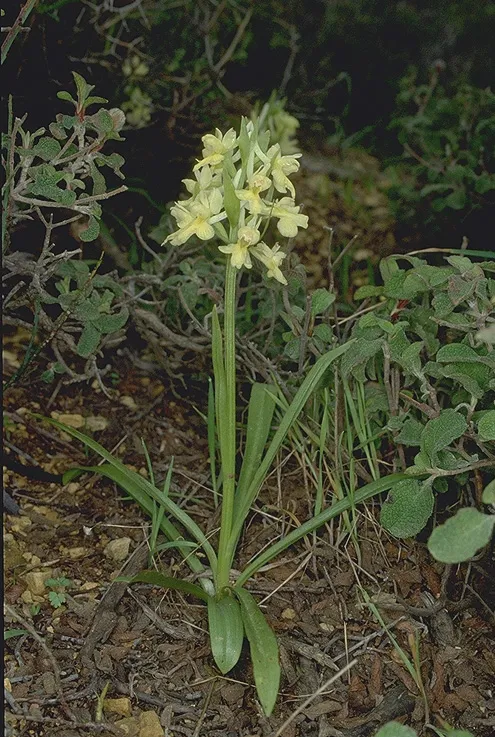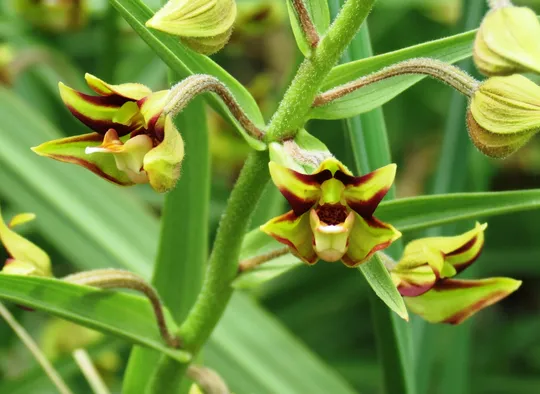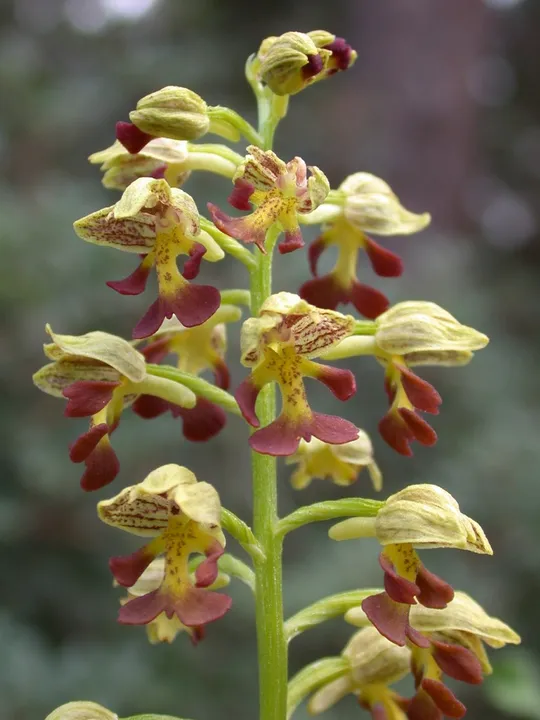Holomboe's Butterfly Orchid
Platanthera holmboei
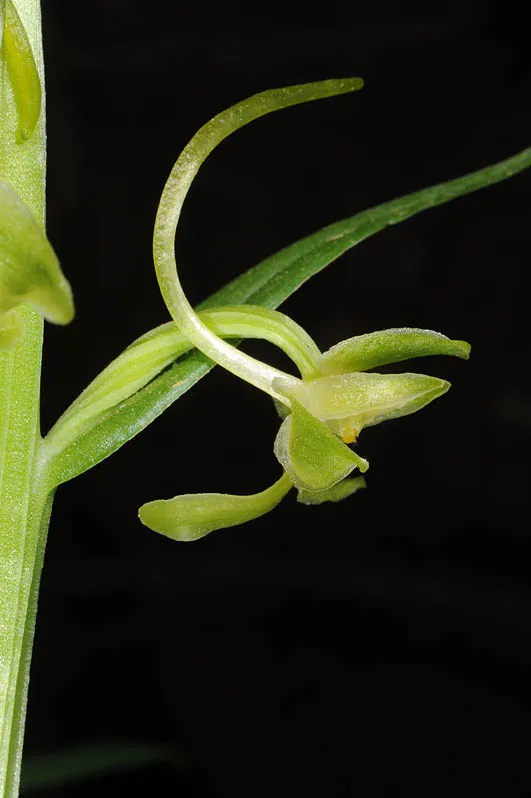
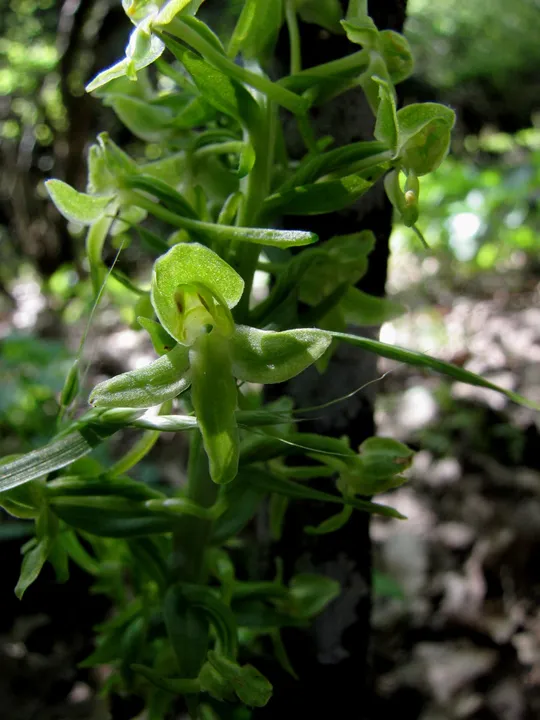

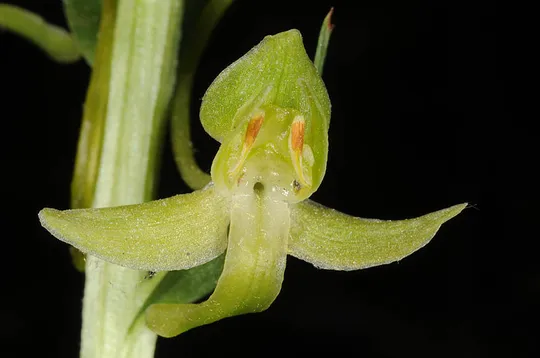
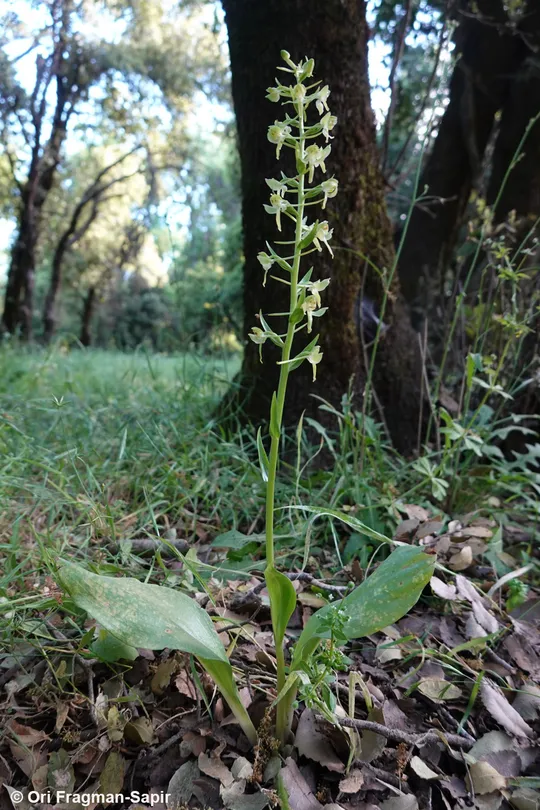
Platanthera chlorantha is found in the
northern Golan Heights and in the Upper Galilee at seven sites recorded in Israel,
and an estimated 10 sites. In the Upper Galilee, it grew in Wadi Admoniyot, and
in an additional site between Sasa and Goren, which is now probably extinct, as
it has not been found there since the 1960s. In the northern Golan Heights, it
is found at five adjacent sites in the Odem forest area – Mount Odem and on an
additional site on Mount Bental. A thorough survey will probably also locate P.
chlorantha on Mount Avital and possibly on the Bashanit Ridge.
Mossy woodlands
and forests and their edges together with Quercus calliprinos and Q. boissieri at altitudes of 800 meters or
more on damp dark brown fertile soils rich in detritus.
The
genus Platanthera has about 130 species found over large areas of the
world, mostly in the Far East, and some throughout Asia, Europe and North
America. P. chlorantha is found, as
noted, in extensive areas of Europe. A close and similar species that also
grows in most of Europe is P. bifolia. The two species
are extremely similar and often hard to tell apart, although they produce
different odors, and are therefore usually pollinated by different pollinators
(Delforge, 2006). Thus, they are customarily regarded as two separate species.
In the eastern Mediterranean, including Israel, there is only one taxon that is
defined as a holomboei subspecies of P. chlorantha. Some experts consider this taxon a
separate species, P. holomboei (Delforge, 2006, Kreutz, 2004). We will
consider it as the subspecies holomboei as described in the Flora of Cyprus
(Meikle, 1985). This is supported by the reports of intermediate forms between
the eastern Mediterranean populations and the typical form of the species, in
northern Turkey and Europe (Kreutz, 2004). Our local subspecies differs from
the typical subspecies in its sparse inflorescence, smaller and greener flowers
and a thread-like horizontal spur.
•
Platanthera chlorantha
is limited to the Upper Galilee and the northern Golan Heights, although in one
of the two sites in the Upper Galilee the plant is extinct. Nevertheless,
because of the difficulty in identifying and locating it in the field not all
the plant populations and all of its sites may have been found.
•
P. chlorantha
populations have few plants and its distribution pattern is extremely scattered
and sparse.
•
The small population
size at each site makes the species vulnerable to the threat of random
extinction. Another threat is road building in the Odem Forest and the
expansion of agricultural areas in the vicinity of Mount Meron.
•
P. chlorantha
is protected by law by virtue of belonging to the Orchidaceae family. It is protected in the Mas’ade (Odem) and Mount
Meron forest reserves.
•
P. chlorantha
is widely distributed and is not globally endangered, but the local population
of the subspecies may be at risk.
Efforts should be made to search the Golan and the Upper
Galilee thoroughly to detect all extant populations. The populations on known
sites in the Galilee and the Golan Heights should be monitored.
Platanthera chlorantha has a broad Atlantic-European-Mediterranean
distribution and is found throughout most of Western and Central Europe
including the British Isles, Norwegian coast, northern Mediterranean Basin (to
Sicily) and eastwards to Israel, West Russia and the Caucasus. The eastern
boundary of its range is unclear because of the sparse information available
and it similarity to related species (Delforge, 2006).
The
plant is common in the eastern Mediterranean in Turkey, Cyprus, Syria, Lebanon
and northern Israel. Israel is the southern limit of its distribution.
Platanthera chlorantha
is a small geophyte belonging to the Orchidaceae family that is extremely difficult to locate in the field. It is found on
a small number of sites in the Upper Galilee and the northern Golan Heights.
The plant is endangered because of its small number of sites and small
populations at most sites. Major road construction at its sites also
constitutes a threat.
Delforge, P. 2006. Orchids of Europe, North Africa and the Middle East. A&C Black.
Kreutz, C.A.J. 2004. The Orchids of Cyprus. Published by the author.
Current Occupancy Map
| 1000 squre meter pixel | 5000 squre meter pixel | 10000 squre meter pixel | |
|---|---|---|---|
| number of observations | 0 | 0 | 0 |
| in total pixels | 0 | 0 | 0 |
| Family | orchidaceae |
| Classification | On the endangered species list |
| Ecosystem | Mediterranean |
| Chorotype | Eastern Mediterranean |
| Conservation Site | Odem Forest |
| Rarity |
1
3
6
|
|---|---|
| Vulnerability |
0
2
4
|
| Attractiveness |
0
0
4
|
| Endemism |
0
0
4
|
| Red number |
1
3.2
10
|
| Peripherality | N |
| IUCN category | DD EW EX LC CR EN VU NT |
| Threat Definition according to the red book | Vulnerable |
 Based on:
Based on:
